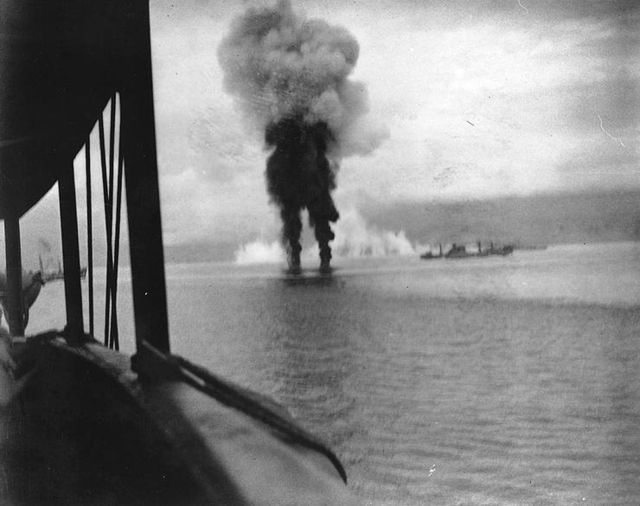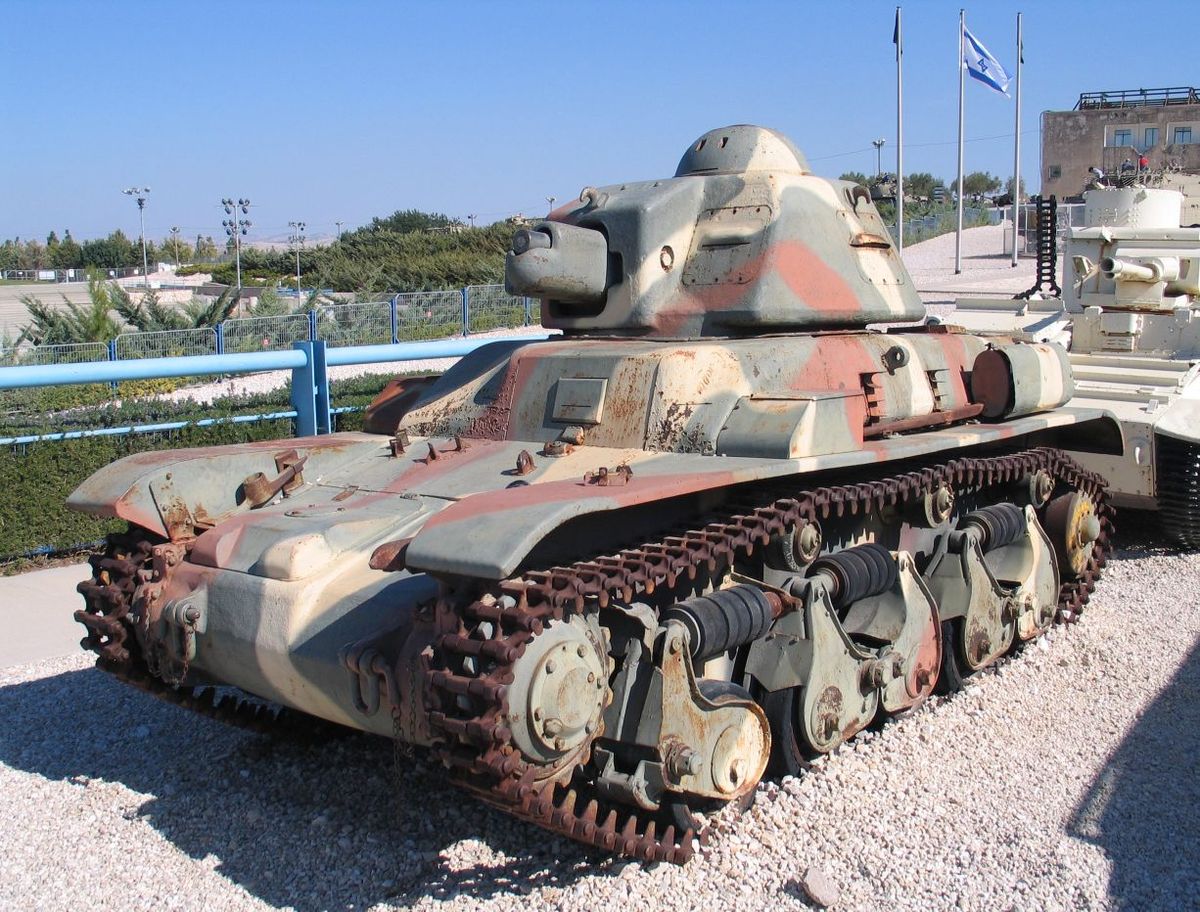
Naval battles for Guadalcanal part 2
One of the new American battleships, USS Washington, was the victorious Japanese battleship Kirishima in the Second Battle of Guadalcanal on November 15, 1942.
After the capture of the Guadalcanal airport, the American marines strengthened around it, not having enough forces and means to capture the island. After the departure of the American fleet to the southeast, the Marines were left alone. In this situation, both sides made attempts to strengthen their forces on the island, which led to several naval battles. They fought with varying luck, but in the end, the protracted struggle turned out to be more profitable for the Americans. It's not about the balance of losses, but that they did not allow the Japanese to lose Guadalcanal again. The naval forces played a large role in this.
When the Kontradm transports left. Turner, the Marines are alone on Guadalcanal. The biggest problem at that time was the inability to unload the 155-mm howitzer squadron of the 11th Marine Regiment (Artillery) and 127-mm coastal artillery guns from the 3rd Defensive Division. Now one of the first tasks was to create a stable surface around the airport (in a strip with a width of about 9 km) and bring the airport into working condition. The idea was to place an air force on the island, which would make it impossible to reinforce the Japanese garrison and cover their own supply transports on the way to Guadalcanal.
A counterbalance to the future American air force on the island (the so-called Cactus Air Force, since the Americans called Guadalcanal "Cactus") was the Japanese naval base in the Rabaul region of New Britain. After the American attack on Guadalcanal, the Japanese held up the 25th Air Flotilla at Rabaul, which was to be replaced by the 26th Air Flotilla. After the arrival of the latter, he was treated as a reinforcement, not as a surrender. The composition of aviation in Rabaul changed, but in October 1942, for example, the composition was as follows:
- 11. Aviation Fleet, Vice Adm. Nishizo Tsukahara, Rabaul;
- 25th Air Flotilla (Commander for Logistics Sadayoshi Hamada): Tainan Air Group - 50 Zero 21, Tōkō Air Group - 6 B5N Kate, 2nd Air Group - 8 Zero 32, 7 D3A Val;
- 26th Air Flotilla (Vice Admiral Yamagata Seigo): Misawa Air Group - 45 G4M Betty, 6th Air Group - 28 Zero 32, 31st Air Group - 6 D3A Val, 3 G3M Nell;
- 21. Air Flotilla (Rinosuke Ichimaru): 751. Air Group - 18 G4M Betty, Yokohama Air Group - 8 H6K Mavis, 3 H8K Emily, 12 A6M2-N Rufe.
The Imperial Japanese ground forces that might intervene on Guadalcanal are the 17th Army, commanded by Lieutenant General Harukichi Hyakutake. General Hyakutake, while still a lieutenant colonel, was the Japanese military attaché in Warsaw from 1925-1927. He later served in the Kwantung Army and later held various positions in Japan. In 1942, the command of his 17th Army was located in Rabaul. He commanded the 2nd Infantry Division "Sendai" in the Philippines and Java, the 38th Infantry Division "Nagoya" in Sumatra and Borneo, the 35th Infantry Brigade in Palau and the 28th Infantry Regiment (from the 7th Infantry Division) in Truk. . Later, a new 18th Army was formed to operate in New Guinea.
Adm. Isoroku Yamamoto also began to gather forces to intervene in the Solomon area. First, the 2nd Fleet was sent to New Britain under the command of Vice Adm. Nobutake Kondo, consisting of the 4th cruiser squadron (the flagship heavy cruiser Atago and the twins Takao and Maya) under the direct command of the Vice Admiral. Kondo and the 5th cruiser squadron (heavy cruisers Myoko and Haguro) under the command of Vice Adm. Takeo Takagi. The five heavy cruisers were escorted by the 4th Destroyer Flotilla under the command of Kontrrad. Tamotsu Takama aboard the light cruiser Yura. The flotilla included the destroyers Kuroshio, Oyashio, Hayashio, Minegumo, Natsugumo and Asagumo. Seaplane transporter Chitose has been added to the team. The whole thing was labeled as "advanced command".
Instead of concentrating the forces of the Navy into one strong team, or teams operating in close interconnection, close to it, adm. Yamamoto divided the fleet into several tactical groups, which were supposed to operate independently, at a considerable distance from each other. That split didn't work in the Coral Sea, it didn't work at Midway, it didn't work at Guadalcanal. Why such an attachment to the traditional doctrine of the dispersal of enemy forces? Presumably because the current commanders promoted it before the war and urged both superiors and subordinates to follow it. Do they now admit they were wrong? The fleet was divided into parts to "confuse" the enemy and distract their forces, with such tactics meaning that individual teams could be more easily destroyed in subsequent attacks.
It is for this reason that, in addition to the "forward team", a "forward team" under the command of the counterattack (known as the "Kido Butai") was separated from the main forces. Hiroaki Abe. The core of this command was the two battleships, Hiei (flagship) and Kirishima, escorted by the aircraft carrier cruiser Chikuma of the 8th Cruiser Squadron. This group also included the 7th cruiser squadron, which was commanded by the rear rad. Shoji Nishimura with the heavy cruisers Kumano and Suzuya and the 10th Destroyer Flotilla under the command of Counterrad. Susumu Kimura: light cruiser Nagara and destroyers Nowaki, Maikaze and Tanikaze.
The main forces of Kido Butai under the command of Vice Adm. Chuichi Nagumo included the 3rd fleet under his direct command: the aircraft carriers Shokaku and Zuikaku, the light aircraft carrier Ryujo, the rest of the 8th cruiser squadron - the cruiser-aircraft carrier Tone and destroyers (the rest of the 10th th flotilla): "Kazagumo", "Yugumo", "Akigumigumo". , Kamigumigumo Hatsukaze, Akizuki, Amatsukaze and Tokitsukaze. There were two more teams, the "support group" of the battleship "Mutsu" under the command of Captain Mutsu, com. Teijiro Yamazumi, which also included three destroyers "Harusame", "Samidare" and "Murasame", as well as a "backup group" under the personal command of adm. Isoroku Yamamoto, consisting of the battleship Yamato, the aircraft carrier Junyō, the escort aircraft carrier Taiyo, and the two destroyers Akebono and Ushio.
The aircraft carrier Junyō was created by rebuilding the passenger ship Kashiwara Maru before it was completed. Similarly, the identical aircraft carrier Hiy was built on the hull of the twin liner Izumo Maru, also purchased during construction from shipowner Nippon Yusen Kaisha. Since these units were too slow (less than 26th century), they were not considered as aircraft carriers, although they were too large for light aircraft carriers (displacement over 24 tons).
However, this is not all, because the task of delivering convoys with reinforcements and supplies to Guadalcanal was assigned to another grouping - the 8th Fleet under the command of Vice Adm. Gunichi Mikawa. It consisted directly of the heavy cruiser Chōkai and the 6th Cruiser Squadron under the command of Kontrrad. Aritomo Goto with the heavy cruisers Aoba, Kinugasa and Furutaka. They were covered by destroyers from the 2nd Destroyer Flotilla under the command of Kontrrad. Raizō Tanaka with the light cruiser Jintsu and the destroyers Suzukaze, Kawakaze, Umikaze, Isokaze, Yayoi, Mutsuki and Uzuki. This force was joined by four escort ships (Nos. 1, 2, 34 and 35), which were rebuilt old destroyers, with two 120 mm guns and two anti-aircraft guns and depth charge drops each.
This is the 8th Vice Admiral of the Fleet. Mikawi was assigned to deliver the 28th Infantry Regiment under the command of Colonel F. Kiyonao Ichika to Guadalcanal. The regiment was divided into two parts. A separate division of the regiment, consisting of 916 officers and soldiers of Colonel V. Ichiki, at the head, was supposed to transport six destroyers under the cover of night: Kagero, Hagikaze, Arashi, Tanikaze, Hamakaze and Urakaze. In turn, the remainder of the regiment (about 700 men plus most of the heavy equipment) was to be transported to Guadalcanal by two transporters, Boston Maru and Daifuku Maru, escorted by the light cruiser Jintsu and two patrols, Nos. 34 and 35. Third the transport, the Kinryū Maru, carried about 800 soldiers from the Yokosuka 5th Marine Division. In total, 2400 people were transferred to Guadalcanal from Truk Island, and the 8th Fleet went as a long-range escort. However, all adm. Yamamoto was to provide additional cover while the Japanese commander hoped to draw the Americans into another major battle and strike back behind Midway.
The forces of adm. The Yamamota left Japan on August 13, 1942. A little later, a transport from Truk left to coordinate the entire operation, which the Japanese called "Operation Ka".
Failure of Operation Ka
On August 15, 1942, American supply ships arrived on Guadalcanal for the first time since the landings. True, only four destroyers were converted into transport: USS Colhoun, USS Little, USS Gregory and USS McKean, but they brought the first materials necessary to organize the airport at Lunga Point (Henderson Field). There were 400 barrels of fuel, 32 barrels of lubricant, 282 bombs weighing 45-227 kg, spare parts and service tools.
A day later, the old Japanese destroyer Oite provided 113 troops and supplies for the island's Japanese garrison, consisting mainly of naval auxiliaries, construction troops, and a significant number of Korean slaves who cannot be seen as the island's defenders. Japanese Marines, including the remnants of Kure's 3rd Marine Group and the newly arrived elements of Yokosuka's 5th Marine Group, were positioned on the western side of the American beachhead at Henderson Field. The Japanese ground forces, by contrast, fortified to the east of the bridgehead.
On August 19, three Japanese destroyers, Kagero, Hagikaze, and Arashi, fired on US Marines and the Americans had no response. There were no planned 127 mm coastal artillery pieces yet. Then came a single-seat B-17 from the 11th Espiritu Santo Bombardment Group, piloted by Major J. James Edmundson. The only one currently ready to fly. He dropped a series of bombs on Japanese destroyers from a height of about 1500 m and, surprisingly, one of these bombs hit! Destroyer Hagikaze was hit in the stern of the main main turret
cal. 127 mm bomb - 227 kg.
The bomb destroyed the turret, flooded the aft ammunition rack, damaged the rudder and broke one screw, reducing the destroyer's speed to 6 V. With 33 killed and 13 wounded, the Hagikaze escorted Arashi to Truk, where she was repaired. The shooting stopped. Major Edmundson walked very low down the beach at Henderson Field and said goodbye to the shouts of the Marines.
On August 20, the first aircraft arrived at Henderson Field: 19 F4F Wildcats from VMF-223, under the command of Capt. F. John L. Smith, and 12 SBD Dauntless from VMSB-232, under the command of Major. Richard S. Mangrum. These aircraft took off from the aircraft carrier USS Long Island (CVE-1), America's first escort aircraft carrier. That night, an attack by about 850 Japanese soldiers under the command of Colonel S. Ichiki, who was repulsed by the almost complete destruction of the Japanese detachment. Of the 916 blown up soldiers of the 28th Infantry Regiment, only 128 survived.
Meanwhile, the Japanese fleet was approaching Guadalcanal. On August 20, a Japanese flying boat spotted the USS Long Island and mistook it for an aircraft carrier of the US main fleet. A reinforced three-ship convoy spearheaded a counterattack led by Japanese troops. Raizo Tanaka was ordered to turn north to bring the American aircraft carrier into the Rabaul air force area. From the southeast, on the other hand, an American supply convoy with transports USS Fomalhaut (AKA-5) and USS Alhena (AKA-9) in direct escort of destroyers USS Blue (DD-387), USS Henley (DD-391). ) and USS Helm were approaching Guadalcanal (DD-388). However, most importantly, the free cover of the convoy consisted of three strike groups under the joint command of Vice Adm. Frank "Jack" Fletcher.
He commanded USS Saratoga (CV-3), the aircraft carrier of Task Force 11, carrying 28 F4Fs (VF-5), 33 SBDs (VB-3 and VS-3) and 13 TBF Avengers (VT-8). The aircraft carrier was escorted by the heavy cruisers USS Minneapolis (CA-36) and USS New Orleans (CA-32) and the destroyers USS Phelps (DD-360), USS Farragut (DD-348), USS Worden (DD-352). , USS Macdonough (DD-351) and USS Dale (DD-353).
The second group of Task Force 16 under the command of Counterradm. Thomas C. Kincaid was organized around the aircraft carrier USS Enterprise (CV-6). On board were 29 F4F (VF-6), 35 SBD (VB-6, VS-5) and 16 TBF (VT-3). TF-16 was covered by: the new battleship USS North Carolina (BB-55), the heavy cruiser USS Portland (CA-33), the anti-aircraft cruiser USS Atlanta (CL-51) and the destroyers USS Balch (DD-363), USS Maury (DD- 401), USS Ellet (DD-398), USS Benham (DD-397), USS Grayson (DD-435), and USS Monssen (DD-436).
The third team of Task Force 18 under the command of Counterrad. Lee H. Noyes was organized around the aircraft carrier USS Wasp (CV-7). It carried 25 F4Fs (VF-71), 27 SBDs (VS-71 and VS-72), 10 TBFs (VT-7) and one amphibious J2F Duck. Escorts were carried by the heavy cruisers USS San Francisco (CA-38) and USS Salt Lake City (CA-25), the anti-aircraft cruiser USS Juneau (CL-52) and the destroyers USS Farenholt (DD-491), USS Aaron. Ward (DD-483), USS Buchanan (DD-484), USS Lang (DD-399), USS Stack (DD-406), USS Sterett (DD-407) and USS Selfridge (DD-357).
In addition, freshly arrived aircraft were stationed at Gaudalcanal, and the 11th bomber group (25 B-17E / F) and 33 PBY-5 Catalina with VP-11, VP-14, VP-23 and VP-72 were stationed on Espiritu. Santo.

